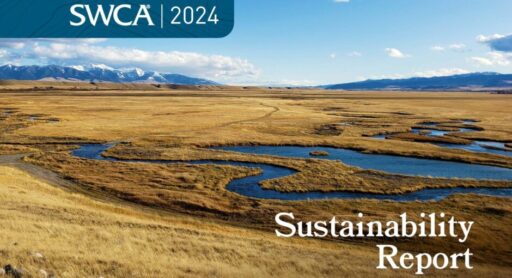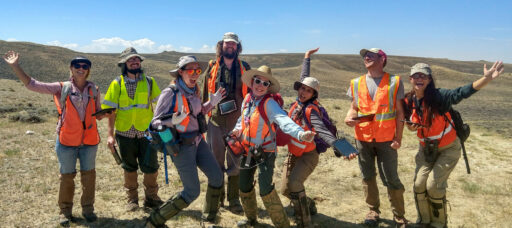2025
Comparably’s Best Company Outlook
* Providing engineering services in these locations through SWCA Environmental Consulting & Engineering, Inc., an affiliate of SWCA.

From the experts we hire, to the clients we partner with, our greatest opportunity for success lies in our ability to bring the best team together for every project.
That’s why:

At SWCA, sustainability means balancing humanity’s social, economic, and environmental needs to provide a healthy planet for future generations.

SWCA employs smart, talented, problem-solvers dedicated to our purpose of preserving natural and cultural resources for tomorrow while enabling projects that benefit people today.

At SWCA, you’re not just an employee. You’re an owner. Everyone you work with has a stake in your success, so your hard work pays off – for the clients, for the company, and for your retirement goals.
More NEPA Changes Announced
Matt Petersen is the National Environmental Policy Act (NEPA) Technical Director for SWCA. Matt has 31 years of experience as a resource specialist and has managed or provided NEPA oversight for over 30 large-scale environmental impact statements (EISs), including projects in Arizona, Alaska, Colorado, Idaho, New Hampshire, Utah, Vermont, Texas, New Mexico, California, and Wyoming. This NEPA experience includes work with most major federal agencies and encompasses resource management plans (RMPs), ski areas expansions, fire management plans, stream restoration, mining, oil and gas, pipelines, transmission lines, wind farms, airports, and power plants. Matt has taught custom NEPA seminars for the Bureau of Land Management (BLM), U.S. Forest Service (USFS), U.S. Department of Transportation Maritime Administration, and the Federal Aviation Administration (FAA). Matt has developed and routinely teaches several open-enrollment NEPA courses to industry professionals, lawyers, and agency staffs. In addition, Matt is a regular instructor on NEPA impact analysis and third-party consulting for the BLM National Training Center (NTC). Matt recently developed the BLM National Training Center courses “NEPA Analysis for EAs” and “Kick-Start Your RMP,” both of which Matt has taken on the road to BLM field offices throughout the continental Unites States and Alaska. Technical expertise includes aquatic habitat impact assessment, mitigation, and restoration; hydrological modeling and analysis; and wetland delineation, mapping, and impact analysis. Matt is also experienced in the use and application of analytical models for quantitatively assessing natural resources impacts through the NEPA process.


On April 20, 2022, CEQ issued the Phase 1 Final Rule, which finalized limited changes to restore regulatory provisions that the 2020 CEQ rulemaking modified or removed. CEQ also indicated that they would issue a future Phase 2 of CEQ rulemaking. On July 28, 2023, this much anticipated release of Phase 2 Notice of Proposed Rulemaking was released. Not surprisingly, proposed Phase 2 rulemaking includes direction specifically related to the recent revisions to the National Environmental Policy Act (NEPA) included with the Fiscal Responsibility Act of 2023. However, more importantly, it also signals a shift in how NEPA is used as a planning tool by including requirements to meet the “spirit of NEPA” as manifested in Section 101 of NEPA.
Although Phase 2 revisions include a plethora of NEPA housekeeping clarifications, the substantive Phase 2 revisions can be encapsulated in two main points:
To review the notice of proposed rulemaking or for details about participating in upcoming public meetings, please visit https://ceq.doe.gov/laws-regulations/regulations.html
Please reach out if you have further questions.